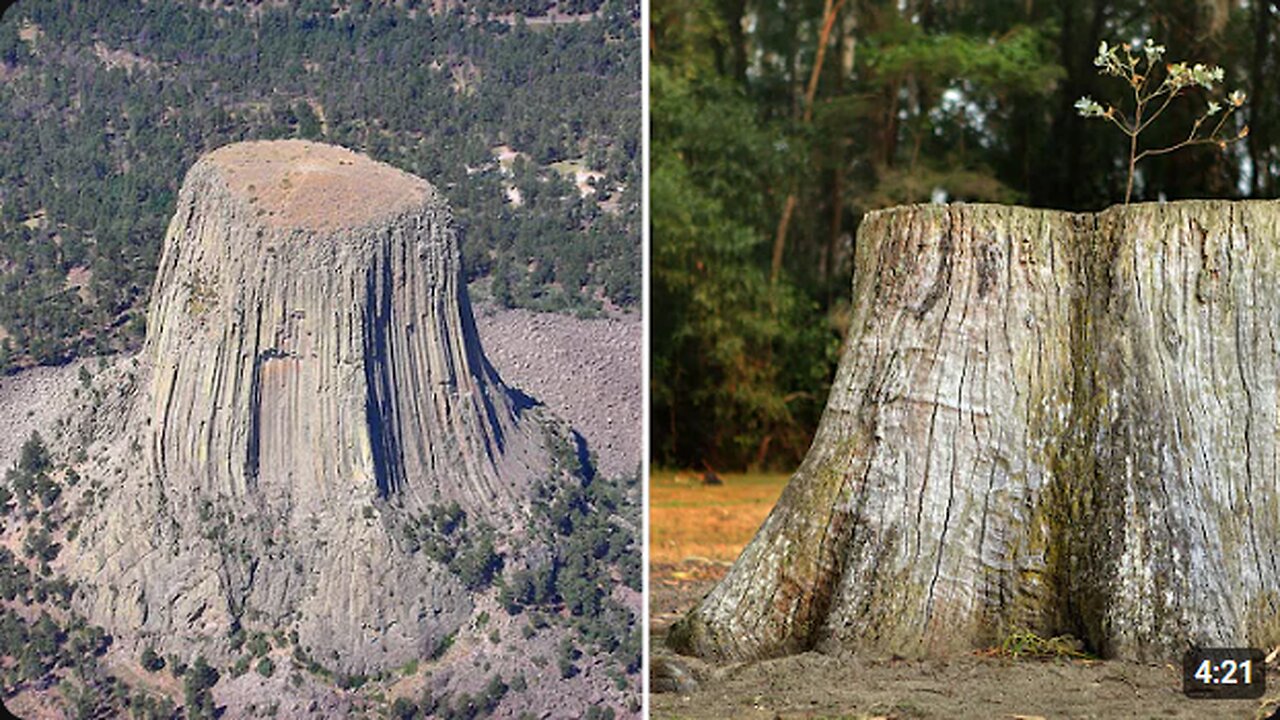Premium Only Content

The TREES before the GREAT FLOOD
In botany, a tree is a perennial plant with an elongated stem, or trunk, usually supporting branches and leaves. In some usages, the definition of a tree may be narrower, including only woody plants with secondary growth, plants that are usable as lumber or plants above a specified height. In wider definitions, the taller palms, tree ferns, bananas, and bamboos are also trees.
Trees are not a monophyletic taxonomic group but consist of a wide variety of plant species that have independently evolved a trunk and branches as a way to tower above other plants to compete for sunlight. The majority of tree species are angiosperms or hardwoods; of the rest, many are gymnosperms or softwoods. Trees tend to be long-lived, some reaching several thousand years old. Trees evolved around 370 million years ago, and it is estimated that there are around three trillion mature trees in the world currently.
A tree typically has many secondary branches supported clear of the ground by the trunk, which typically contains woody tissue for strength, and vascular tissue to carry materials from one part of the tree to another. For most trees the trunk is surrounded by a layer of bark which serves as a protective barrier. Below the ground, the roots branch and spread out widely; they serve to anchor the tree and extract moisture and nutrients from the soil. Above ground, the branches divide into smaller branches and shoots. The shoots typically bear leaves, which capture light energy and convert it into sugars by photosynthesis, providing the food for the tree's growth and development.
Trees usually reproduce using seeds. Flowers and fruit may be present, but some trees, such as conifers, instead have pollen cones and seed cones. Palms, bananas, and bamboos also produce seeds, but tree ferns produce spores instead.
Trees play a significant role in reducing erosion and moderating the climate. They remove carbon dioxide from the atmosphere and store large quantities of carbon in their tissues. Trees and forests provide a habitat for many species of animals and plants. Tropical rainforests are among the most biodiverse habitats in the world. Trees provide shade and shelter, timber for construction, fuel for cooking and heating, and fruit for food as well as having many other uses. In much of the world, forests are shrinking as trees are cleared to increase the amount of land available for agriculture. Because of their longevity and usefulness, trees have always been revered, with sacred groves in various cultures, and they play a role in many of the world's mythologies.
-
 3:39
3:39
TOWERCLIPS
11 months agoPre-Flood Ruins of Advanced Civilization High in the Moutains: Naupa Huaca
1341 -
 2:49:33
2:49:33
TimcastIRL
3 hours agoDemocrat Call On Liberals To 'FORCEFULLY RISE' Against Trump, DHS ATTACKED In Chicago | Timcast IRL
165K59 -
 LIVE
LIVE
Badlands Media
9 hours agoDEFCON ZERQ Ep. 013
5,556 watching -
 LIVE
LIVE
Laura Loomer
3 hours agoEP149: Trump Frees the Hostages: Will HAMAS Respect the Ceasefire?
573 watching -
 LIVE
LIVE
SpartakusLIVE
4 hours agoLIVE from SUPER SECRET, VIP Location || BEACH FRONT into Verdansk
815 watching -
 DVR
DVR
Flyover Conservatives
22 hours ago"The Testosterone Levels of a Baby Bird" - America’s Health Crisis w/ Dr. Troy Spurrill | FOC Show
11.8K -
 LIVE
LIVE
PandaSub2000
1 day agoLIVE 10pm ET | SONIC RACING CROSSWORLDS with YOU!
100 watching -
 LIVE
LIVE
Drew Hernandez
6 hours agoDISGRACED SCOTUS REJECTS ALEX JONES' INFOWARS FREE SPEECH APPEAL
846 watching -
 3:58:57
3:58:57
GrimmHollywood
5 hours ago🔴LIVE • GRIMM'S TUESDAY FRIGHT NIGHT with LEEMIDA • LITTLE NIGHTMARES 3 • PART 1 •
431 -
 2:20:19
2:20:19
FusedAegisTV
2 hours agoGame & Rant #69 | CNN Mad Men Like To Look At Women, Nurse Joy Blackface? WTF Pokémon
325